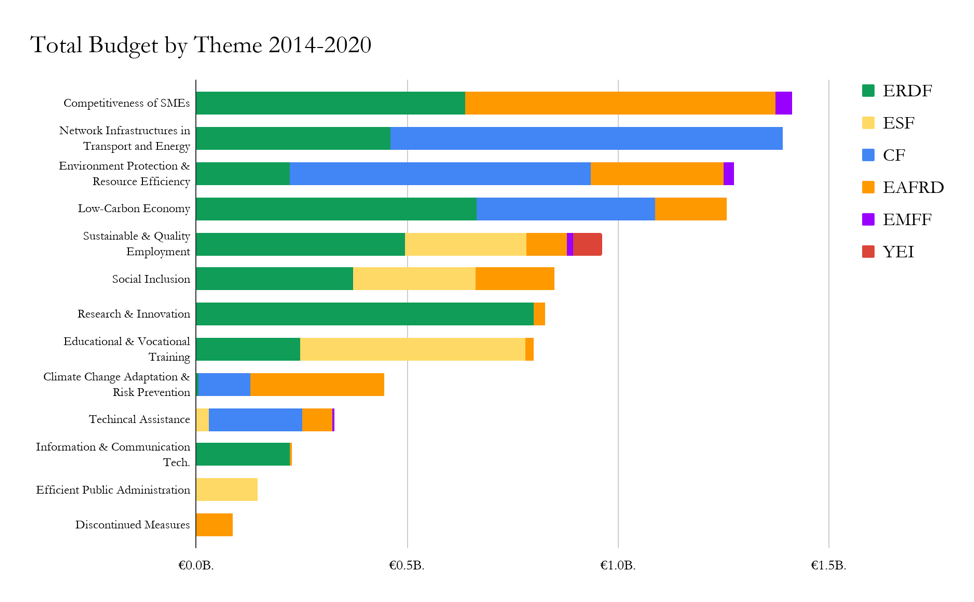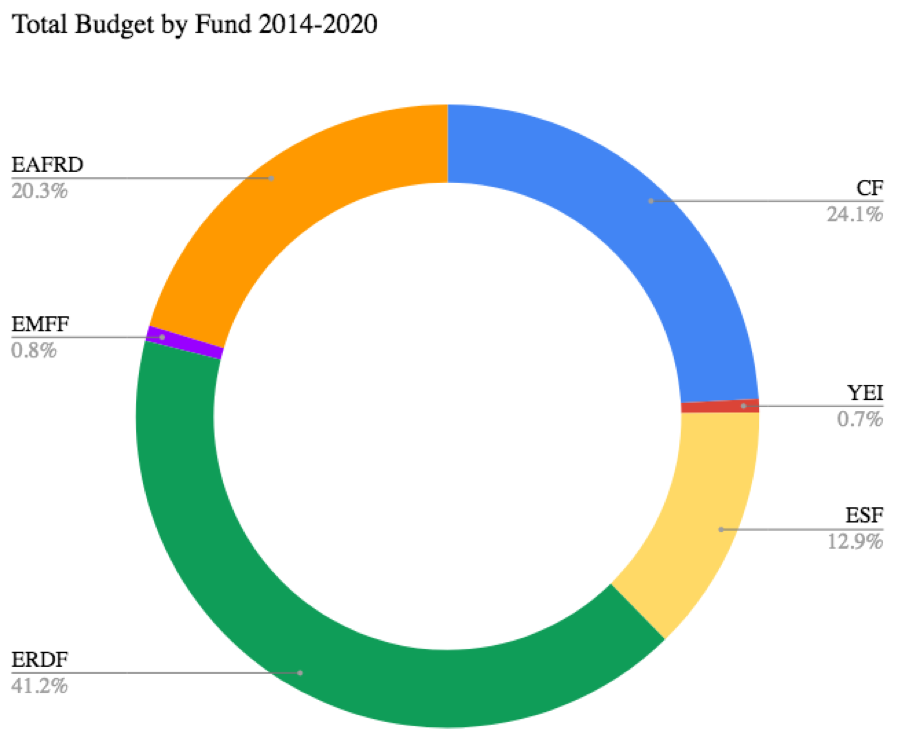News
Country Profile | Lithuania

Through a total of three national programmes, Lithuania has been allocated €8.39 billion from ESI funds for the duration of the 2014-2020 Multiannual Financial Framework; an additional national contribution of €1.56 billion take Lithuania’s total budget to €9.95 billion. This budget is designed to support Lithuania’s socio-economic development and is to be invested in:
- Improving the innovativeness and competitiveness of the national economy;
- Strengthening the links between R&I and industrial policies;
- Supporting SMEs, as well as modernising agricultural, forestry and fishery holdings;
- Tackling unemployment and social exclusion;
- Improving the quality of education and training;
- Improving the labour market by increasing the level of qualifications and skills of the active labour force and preventing early school living;
- Improving accessibility and transportation;
- Supporting environment-friendly practices to reduce greenhouse gases;
- Enhancing the efficiency of public administration.
The main investment areas of the government of Lithuania are the improvement of national SMEs and the development of network infrastructures in the energy and transport sectors. Thanks to ERDF, EAFRD, CF and EMEF, a total of respectively €1.4 and €1.3 billion are being invested to help companies and firms grow, and to build new roads and railways to further connect the country. Alongside infrastructure building and SMEs improvement, protection of the environment and resource efficiency enhancements are a priority for Lithuania. As it is shown in the chart below, the government was granted around €1.2 billion from the EU through ERDF, CF and EAFRD in order to improve the country’s environmental protection programmes. In addition, low-carbon economy is the fourth priority of the Lithuanian government in terms of ESI expenditures, and will be addressed with a €1.2 billion budget.

The increase of sustainable and quality jobs in the country is another important target for the country’s development and, thanks to the €1 billion budget, improvements to the labour market are constantly being made.
To fully understand the EU funding budget of the Lithuanian government, Chart 2 gives an overview of the total available budget divided into the shares that each European Fund has in the total budget of €9.95 billion. With more than 40%, the European Regional Development Fund (ERDF) allows Lithuania to spend more than €4 billion, while the Cohesion Fund (CF) and the European Agricultural Fund for Rural Development (EAFRD) distributed to the country €2.4 and €2 billion respectively.

Other significant funding comes from the European Social Fund (ESF) with more than €1 billion, while the Youth Employment Initiative (YEI) and the European Maritime and Fisheries Fund (EMFF) together reach 1.5% of the total, meaning €150 million of available funding.
The country’s absorption rates are aligned to the European Union average: Lithuania has already allocated financial resources to selected projects for up to 67% of the total allotment, a budget of €6.7 billion, and has already spent 33% of its allocation, the EU average.
However, the correct distribution of EU funds in the country is menaced by the pervasive corruption of public officers. In fact, the Lithuanian Special Investigation Service (the national anti-corruption agency) conducted a national survey on corruption in 2011 and the results were extremely negative: 39% of business people claim that procedures of getting financial support from EU funds are partly or very corrupt, and 54% of public officials claim the same. In addition, the 2013 results of Transparency International’s Global Corruption Barometer show that Lithuanian residents pay more bribes than anyone else in the European Union.
The government needs to take firm and drastic measures to reduce the widespread corruption in the country in order to fully profit of EU funds, providing the Lithuanian people with new infrastructures, an improved economic environment and better environment protection measures.
Country facts:
Name: Lithuania
Capital: Vilnius
Government: Semi-presidential Republic
Population: 2,790,472
Area: 65,300 km2
GDP per capita: €17,695
Currency: Euro (€)






